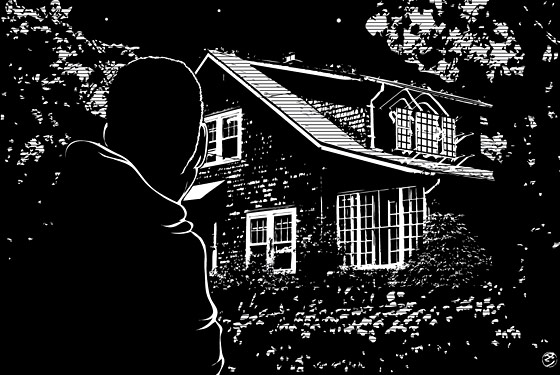
The story that’s too good or bad to be true seldom is. So when the NYPD recently fingered 14-year-old C. J. Jones for the murder of his mother and three younger siblings in their Staten Island apartment—a crime complete with throat slashings, arson, and a suicide note whose crisped remains said only “am sorry”—reporters ran with it like a hot bundle of cash. It’s not that they didn’t nose around (a little): C.J. was having trouble in school; a neighbor saw him burning paper in the yard earlier in the week. But that was all it took to send the Post into a fit of epithets (“massacre kid,” “suicidal teenage pyromaniac”) while the Times sympathetically sought metaphors to help understand the boy’s “life of rage.” “For who knows how long, C. J. Jones had been sending out flares,” the “Big City” column began. “Inside, he burned.”
Except, no, he didn’t. Or at least not in a way that led to murder. The police information that fueled the story turned out to be wrong, and three days later we learned, as a Post headline put it, IT WAS MOM. As if, thank God, things were fine now that Leisa Jones, and not her son, was the apparent culprit. Friday’s beatified martyr—“a single mother in a terrible job market … doing everything she could to hold things together,” per the Times—inherited the outrage that C.J., in his inconvenient innocence, had abdicated: “deranged,” “deeply disturbed,” and, wait for it, “monster.” The Times scratched its head. Surely someone was burning?
Hard to say, since the story basically disappeared once its protagonist turned out to be just a run-of-the-mill Psycho Mom: a poor, black Susan Smith with a blade and a lighter instead of a Mazda. The “bad seed” narrative—genetically sociopathic child commits atrocities—was much more newsworthy, just as it had been in 1997, when Malcolm X’s widow, Betty Shabazz, died from injuries sustained in a fire set by her 12-year-old grandson, or even this April, when Torry Hansen returned the 7-year-old Russian boy she’d adopted, saying he’d drawn “a picture of our house burning down.” (Fire is a boy’s first fatal weapon.) The women in these stories are pitied or vilified, as the case may be, while the children continue to fascinate us as prize exhibits in the museum of inherent evil.
But why should C.J. be a more compelling murderer than Leisa? Perhaps because the evil we now impute to the mother is not so inherent as the boy’s would have been if the original story were true. A 30-year-old woman with four children by several fathers, all absent, has a biography almost too ripe with possible explanations. But “explanations”—no matter how much they allow us to tut-tut over other people’s difficult lives or bad choices—are not what make stories memorable. Mystery is. The unknowable danger of the teenage mind easily trumps the all-too-knowable history (Susan Smith had been molested by her stepfather) of an adult’s decompensation.
The ideal murderer for our prurient interests would therefore be a choirboy with a switchblade; failing that, we want as young a child as possible. (The killer in The Bad Seed was 8; Damien in The Omen starts the mayhem at 5.) C.J. was perhaps already too old and too familiar with hardship to be a pure example of innate malice. Due to an “unexplained injury,” he was partly blind in one eye.
As (the Times might say) are we. I have a 14-year-old son who sometimes glares as if he would like to burn me down. When I wonder, along with almost everyone in my cohort, if we have overindulged and underdisciplined our children, I need only read about a Malcolm Shabazz or an Artyom Savelyev or the pre-correction C. J. Jones to feel I can be acquitted of all my parental misdemeanors. Kids are not our fault, these stories say; they’re born that way. Too bad for that theory that poor C.J. turned out to be not his mother’s murderer but her victim.
Have good intel? Send tips to intel@nymag.com.